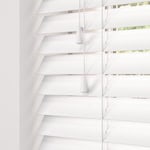Description
Curtains Test Product
Text description of fabric
IF YOU NEED HELP PLEASE CONTACT OUR CUSTOMER SERVICE DEPARTMENT (MON – FRI 9am – 5pm)
 Faux Wood Venetian Blinds with Cords
Faux Wood Venetian Blinds with Cords Faux Wood Venetian Blinds with Tapes
Faux Wood Venetian Blinds with Tapes Real Wood Venetian Blinds with Cords
Real Wood Venetian Blinds with Cords Real Wood Venetian Blinds with Tapes
Real Wood Venetian Blinds with Tapes Next Day Wood Venetian Blinds with Cords
Next Day Wood Venetian Blinds with Cords Next Day Wood Venetian Blinds with Tapes
Next Day Wood Venetian Blinds with Tapes Premium Wood Venetian Blinds with Cords
Premium Wood Venetian Blinds with Cords Premium Wood Venetian Blinds with Tapes
Premium Wood Venetian Blinds with Tapes Motorised Real Wood Venetian Blinds
Motorised Real Wood Venetian Blinds Motorised Wood Venetian Blind Accessories
Motorised Wood Venetian Blind Accessories Ready Made Real Wood Venetian Blinds
Ready Made Real Wood Venetian Blinds Aluminium Venetian Blinds
Aluminium Venetian BlindsCurtains Test Product
Text description of fabric
IF YOU NEED HELP PLEASE CONTACT OUR CUSTOMER SERVICE DEPARTMENT (MON – FRI 9am – 5pm)
Measuring Guide For Curtains
All our curtain are made with a 3cm manufacturing tolerance (width & drop).
Always use a metal tape measure when taking the measurements.
Measuring The Width
When measuring the width of curtains we always recommend you measure the curtain pole or track width not the existing curtains.
When measuring a pole, measure the length of the pole between the finials (decorative ends). When measuring a track and the track has an overlap in the centre, measure the length of the track and add the length of the overlap to this measurement to give you an overall length.
Measuring The Drop
The length of your curtains will depend on your preference. Typical length measurements are as follows.
Full length which is approximately 1.5cm to 3cm above floor level.
Above radiator which is typically 1cm to 3cm above the radiator.
Below the window sill which is typically around 15cm below the sill.
Measure from the top of the track or bottom of the curtain rings for a curtain pole to the desired length of your curtains.
When ordering tab top or eyelet curtains, the measurement for the drop should be from the very top of the pole.
You may be aware that there have actually been a number of extremely unfortunate cases of children or animals perishing mistakenly because they’ve been suffocated by the inner or outer cords of a blind. You may be unaware of the legislation that was passed in February 2014 to attempt and avoid these unnecessary deaths.
It’s now prohibited to install a home window blind which doesn’t adhere to the brand-new child safety requirements. Blinds must be fully compliant with BS EN 13120:2009+A1:2014 and validated as ‘safe’, and this is typical of blinds in all rooms in every house, regardless of whether youngsters are present or otherwise.
Toddlers matured 16-36 months are specifically in danger of strangulation. They’re mobile, but their muscle control and windpipes aren’t fully established. Because their heads still weigh proportionately greater than their bodies, they cannot release themselves effortlessly if they come to be tangled, and they asphyxiate more quickly compared to adults if their necks are restricted.
The brand-new regulations intends to shield babies and kids by making certain that child-safe blinds are set up in all houses now and in the future, no matter the existence or absence of kids.
We need to fit safety devices on cables and chains when they’re made, and test all the safety-critical elements carefully. There are now limits on cable and chain lengths. We need to provide security equipment for you to fit for protecting against dangerous loops being made on cables and chains, and make certain all product guidelines come with security cautions.
When you purchase a blind, follow the instructions very carefully and make sure you match the safety and security tool supplied if it’s required (for a corded blind). Several blinds we sell are now cordless, so you won’t have to fit a safety device, but if you ‘d like to convert an existing blind, spring conversion kits are available to buy for most of our ready-made roller blinds.
Alternatively, you can fit a P-clip to an alreadying existing blind to hold the cord taut and tidy, and away from little hands. We’re now giving these away free of charge for all our existing customers, please get in touch if you need some.
Where can I find out more?
Please visit the British Blinds & Shutters Association or visit the Make It Safe website.

